CONTACT
hello@stagwellglobal.com
SIGN UP FOR OUR INSIGHTS BLASTS
As the marketing landscape continues to evolve, Stagwell is proud to lead the charge as the only digital-first marketing services network. Today, we’re excited to announce that 9 of our network agencies have been recognized by the prestigious Webby Awards for their outstanding work in pushing the boundaries of the internet. They include Anomaly, ARound, 72andSunny, Code and Theory, GALE, HUNTER, Instrument, Observatory, and YML.
With a total of 13 Webby Award nominations and 14 honors received to date this year, Stagwell’s agencies are shining bright on the shortlist. It’s a testament to the innovative and creative minds within our network who are driving forward the future of digital marketing. Join us in celebrating this remarkable achievement and cast your vote for Webby’s People Choice Award by Thursday, April 20th.
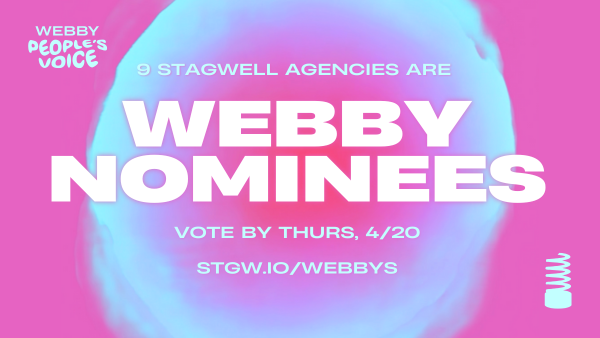
72andSunny
- Call of Duty Modern Warfare “Squad Up” – Nominee – Video > General Video > Trailer – VOTE HERE
- NFL “We See You” – Honoree – Advertising, Marketing & PR > Advertising Campaign > Corporate Social Responsibility Campaign – VIEW THE WORK
- HubSpot “Success Stories” – Honoree – Advertising, Marketing & PR > Craft > Best Copywriting – VIEW THE WORK
- Bumble “Fall in Love with Dating” – Honoree – Advertising, Marketing & PR > Individual > Video Ad Shortform > VIEW THE WORK
- Google “Helping You Help Them” – Honoree – Advertising, Media & PR – Advertising Campaigns – Best Partnership or Collaboration – VIEW THE WORK
Anomaly
- Make Time for the Life Artois – Nominee – Advertising, Media & PR > Craft > Best Video Editing – VOTE HERE
ARound
- ARound Stadium – Honoree – Apps, dApps and Software > App Features > Best Use of Augmented Reality – VIEW THE WORK
Code and Theory
- Skidmore, Owings & Merrill – Nominee – Websites and Mobile Sites > General Websites and Mobile Sites > Architecture, Art & Design – VOTE HERE
- Code and Theory Inclusive Design & Marketing – Honoree – Video > Branded Entertainment > Diversity, Equity & Inclusion – VIEW THE WORK
- Windows (Consumer) – Honoree – Websites and Mobile Sites > General Websites and Mobile Sites > Web Services & Applications – VIEW THE WORK
- Fatherly – Honoree – Websites and Mobiles Sites > General Websites and Mobile Sites > Travel & Lifestyle – VIEW THE WORK
- Amazon Ads – Honoree – Advertising, Media & PR > Branded Content > Products & Services – VIEW THE WORK
GALE
- 26.2 You’re Gonna Need Milk For That with MilkPEP – Nominee – Advertising, Media & PR > PR Campaigns > Best Event Activation > VOTE HERE
HUNTER
- Johnnie Walker and Lilly Singh Join Forces for Gender Parity in Leadership – Nominee – Video > Branded Entertainment > Corporate Social Responsibility – VOTE HERE
Instrument
Observatory
- “Live From The Upside Down” Netflix Stranger’s Things and Doritos from Observatory & Slap Global – Nominee – Advertising, Media & PR > Branded Content > Media & Entertainment – VOTE HERE
- “Live From The Upside Down” Netflix Stranger’s Things and Doritos from Observatory & Slap Global – Nominee – Video > Branded Entertainment > Media & Entertaniment – VOTE HERE
- “Live From The Upside Down” Netflix Stranger’s Things and Doritos from Observatory & Slap Global – Nominee – Metaverse, Immersive & Virtual > General Virtual Experiences > Entertainment, Sports & Music – VOTE HERE
YML
- YETI Year in Preview: Plan your wildest year yet – Nominee – Websites and Mobile Sites > General Websites and Mobile Sites > Events – VOTE HERE
- Albertsons: Simplifying Grovery Shopping for Millions – Nominee – Apps, dApps and Software > General Apps > Shopping & Retail – VOTE HERE
- Chopt: Building an End-to-End Experience for a Challenger Brand – Nominee – Apps, dApps and Software > General Apps > Food & Drink – VOTE HERE
- FIREWATCH: Using NFTs to Fight California Wildfires – Honoree -Websites and Mobile Sites – Responsible Innovation – VIEW THE WORK
- Albertsons: Simplifying Grocery Shopping for Millions in the Websites and Mobile Sites – Honoree – Best Mobile Visual Design – Function – VIEW THE WORK
- Champion: Evolving an Iconic Brand For a New Generation – Honoree – Websites and Mobile Sites > Shopping & Retail – VIEW THE WORK
- Chopt: Building an End-to-End Experience for a Challenger Brand – Honoree – Apps, dApps and Software > Technical Achievement – VIEW THE WORK
- FIREWATCH: Using NFTs to Fight California Wildfires – Honoree – Websites and Mobile Sites > Sustainable Technology: VIEW THE WORK
Related
Articles
In the News, Press Releases, Thought Leadership
Oct 30, 2024
77% of CEOs Say the Election Will Impact their 2025 Business Strategy; 85% are Bullish on Investment in the Gulf Region, Reveals Stagwell (STGW) Survey
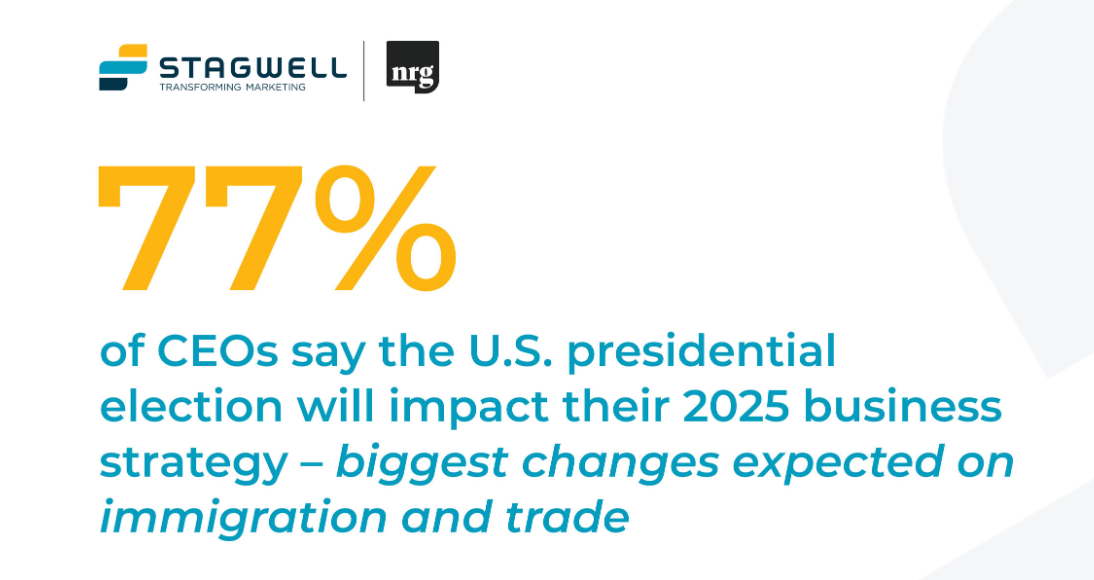
Marketing Frontiers, Thought Leadership
Jul 26, 2024
Game On for In-Game Advertising? Four Things Marketers Should Know About Gaming
It's clear from dozens of Stagwell’s interviews with senior marketers…
Thought Leadership
Jun 28, 2024
Hitting the Mark: Future of News Takeaways from Cannes Lions
Stagwell brought the Future of News to Cannes Lions, where…
Newsletter
Sign Up
CONTACT
hello@stagwellglobal.com
SIGN UP FOR OUR INSIGHTS BLASTS
Brand fandom is driving the transformation of marketing. And marketers can’t move fast enough to maximize the potential of community engagement to drive long-term loyalty. Hear how leaders from LEGO, Lenovo, and Infinite Reality are using everything from immersive technologies to branded entertainment to engage with their brand fans. Catch their insights below and visit YouTube to see all of our Content Studio interviews with C-Suite leaders.
– Alexis Williams, Chief Brand Officer, NA
LEGO: Branded Entertainment and Brand Fandom Go Hand in Hand
LEGO Creative Director James Gregson shared his team’s playbook for using brand entertainment content like “The LEGO Movie” to drive long-term brand fandom with Rescout’s Ivan Kayser. Watch the clip.
Lenovo and Infinite Reality: What Is the Most Important Driver of Fandom?
National Research Group’s Jay Kaufman interviews Infinite Reality CMO Hope Frank, Lenovo CMO Gerald Youngblood, NRG CMO Grady Miller and Brand Performance Network’s Shannon Pruitt after their SXSW Session “The Anatomy of a Fan.” Watch the clip
Minnesota Twins: Fan Insights Fuel Better Experiences
Technology is giving sports teams and sports marketers insights into fan behavior that they’ve never had before. Chris Iles, Sr. Director, Innovation and Growth at the Minnesota Twins, caught up with Stagwell at SXSW to chat about how teams like Twins are integrating tech innovation to reach a new generation of fans. Watch the Clip.
Related
Articles
In the News, Press Releases, Thought Leadership
Oct 30, 2024
77% of CEOs Say the Election Will Impact their 2025 Business Strategy; 85% are Bullish on Investment in the Gulf Region, Reveals Stagwell (STGW) Survey

Marketing Frontiers, Thought Leadership
Jul 26, 2024
Game On for In-Game Advertising? Four Things Marketers Should Know About Gaming
It's clear from dozens of Stagwell’s interviews with senior marketers…
Thought Leadership
Jun 28, 2024
Hitting the Mark: Future of News Takeaways from Cannes Lions
Stagwell brought the Future of News to Cannes Lions, where…
Newsletter
Sign Up
By
Mark Penn, Chairman and CEO, Stagwell
CONTACT
hello@stagwellglobal.com
SIGN UP FOR OUR INSIGHTS BLASTS
When I launched Stagwell, I promised we would transform marketing with digital strategy and technology innovation, and we are off-to-the-races in 2023 building game-changing AR and AI products to do just that. From pressing our advantage as early-movers in the artificial intelligence and communications technology space, to breaking world records with our augmented reality partners, I’m proud to share an update on the digital innovation efforts underway across Stagwell.
AI is one of the most talked about trends in business in 2023. There’s a lot of buzz, hype, and predictions afoot about what it can and can’t do for advertising. We’re believers in AI as enablement technology — while it can certainly replace around 85% of marketing activity, the final 15% is powered by that intangible human element that makes creative marketing soar.
Our teams are working to help our partners around the world absorb the promises and pitfalls of this new technology. Visit our website to hear more from our experts about this new frontier, and if you have questions about any of the below, please reach out to me to discuss.
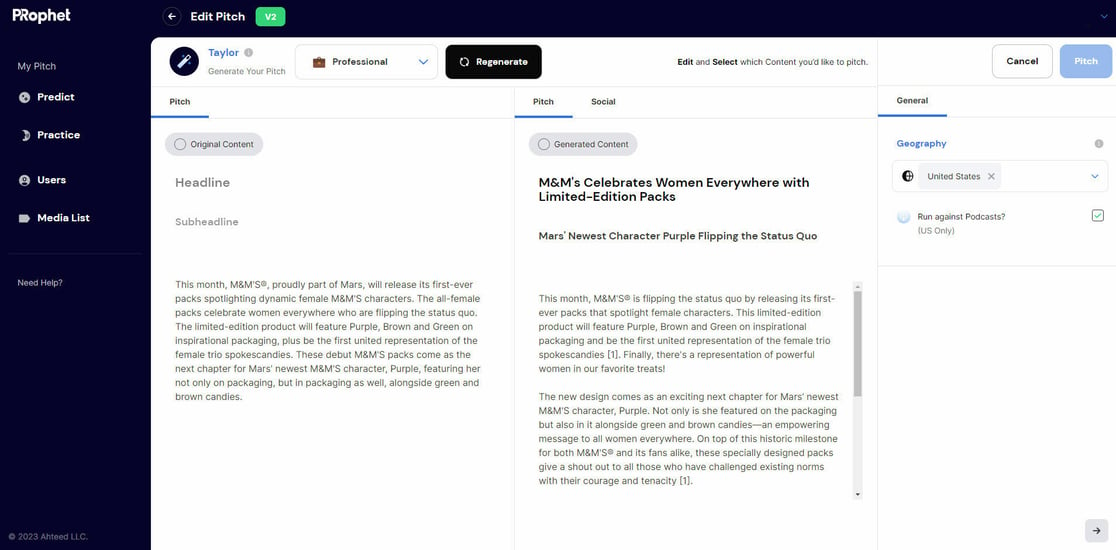

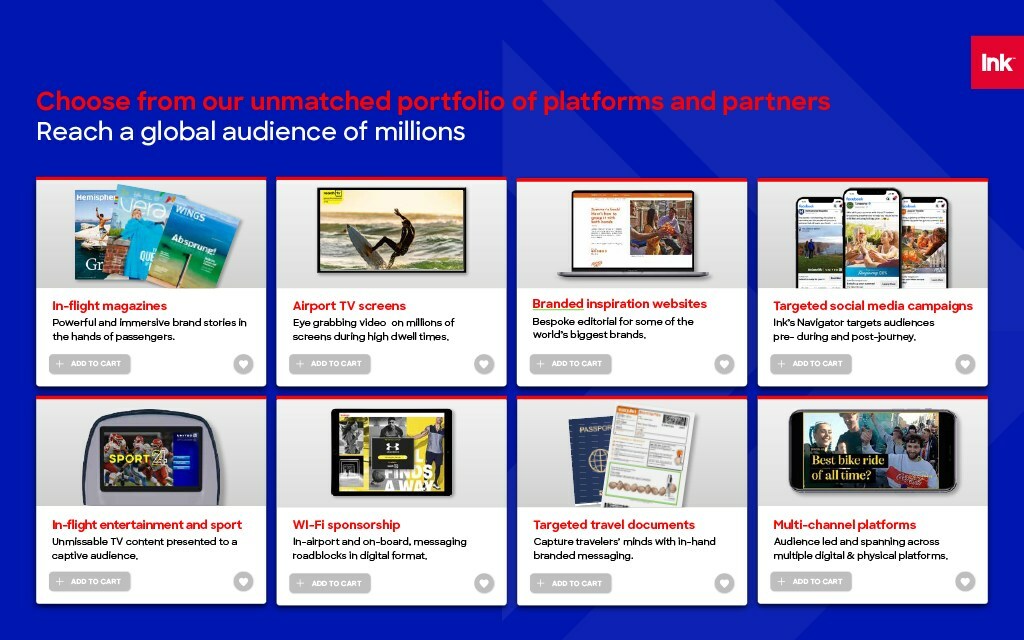
At CES 2023 in January, Stagwell was the only global marketing services network to exhibit on the main convention floor as we focused on showing how we transform marketing through impactful technology. There, we unveiled an exciting new division in the Stagwell Marketing Cloud to build Specialty Media formats that offer brands novel ways to reach, engage, and monetize key consumer segments across sports, travel, retail, news, and dining. The unit currently includes ARound, our shared AR product in use by the Los Angeles Rams; a new QR code powered marketplace for restaurants and bars; and a new travel marketplace from Ink.
Through this tech-focused approach, we are bringing new experiences to consumers, whether at the stadium, in a restaurant, or on an airplane. Along with these experiences comes a wealth of creative marketing opportunities, adding, as Digiday reports, yet another “bow in the quiver” of the Cloud that keeps us at the forefront of new forms of richly targeted media
Related
Articles
In the News, Press Releases, Thought Leadership
Oct 30, 2024
77% of CEOs Say the Election Will Impact their 2025 Business Strategy; 85% are Bullish on Investment in the Gulf Region, Reveals Stagwell (STGW) Survey

Marketing Frontiers, Thought Leadership
Jul 26, 2024
Game On for In-Game Advertising? Four Things Marketers Should Know About Gaming
It's clear from dozens of Stagwell’s interviews with senior marketers…
Thought Leadership
Jun 28, 2024
Hitting the Mark: Future of News Takeaways from Cannes Lions
Stagwell brought the Future of News to Cannes Lions, where…
Newsletter
Sign Up
CONTACT
hello@stagwellglobal.com
SIGN UP FOR OUR INSIGHTS BLASTS
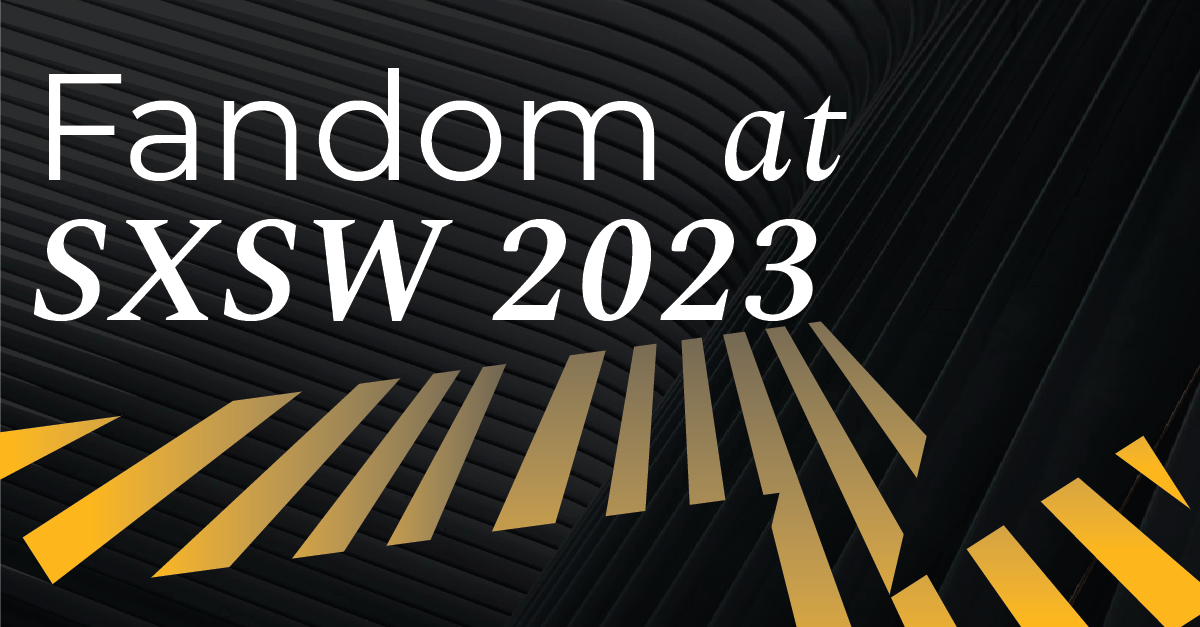
Our biggest takeaway from SXSW 2023? Brand fandom is driving the transformation of marketing. And marketers can’t move fast enough to maximize the potential of community engagement to drive long-term loyalty. Here are our top three learnings from the fandom conversation in Austin this year.
FANDOM and COMMUNITY
Throughout 2023, we’ve been talking about the convergence of “community, content, and commerce”. At SXSW, the first C in that clause was on full display as brands built physical communities to connect attendees to their favorite brand elements. Take Roku City; introduced as a dynamic screensaver in 2017, it drives Twitter mentions once every 12 minutes. Roku finally created the city in real life in Austin in partnership with Best Buy, driving attendees through a whimsical entertainment and commerce metropolis.
In Austin, Reddit loomed as the unspoken champion of consumer communities; in a cheeky session, the brand acknowledged that while ChatGPT and its peers are quickly transforming the internet, they won’t usurp community information any time soon. ” “Where do you think they get their answers from?” quipped Reddit’s COO.
So What? Community is an accelerant for brand fandom. Tap into your consumers’ key communities, or otherwise deliver it via your product and services, and you have a long-term platform of ambassadors.
FANDOM and IMMERSIVE EXPERIENCES
Brands traded talk of the metaverse for discussion of “immersive experiences” at SXSW this year. They’re excited what’s possible with personalization in immersive marketing; as well as how brands can use shared moments of interactivity between consumers to build fandom.
Marketers should tap into a toolbox spanning V.R., AR, and interactive activations to build brand ecosystems that empower consumers to customize their interactions with the brand — while being part of a larger community of passionate fans. And don’t discount the power of A.I. to aid here; for example, new features from our partners at Infinite Reality, unveiled at SXSW, make shopping and viewing interactions in the Metaverse more intuitive and personalized for participants.
So What? Shared Experiences + Personal Touches = Fuel for Fandom-Driving Experiences
FANDOM and PROBLEM SOLVING
Brands are in problem-solving mode, bending tech and media to tackle sustainability, hunger, disease, and socioeconomic ails. For brands like Dexcom, which brought a dynamic panel featuring Nick Jonas to life at SXSW with our colleagues at Allison+Partners on the lived experiences of patients with diabetes, becoming a trusted source of safety and support for a consumer set can drive dividends for years to come. Dexcom’s emphasis on improving access and affordability and its marketing efforts at the Super Bowl over recent years allow it to make inroads with massive addressable consumer sets, with 1 in 5 Americans being diagnosed with diabetes.
Consumers reward brands that show a penchant for problem-solving; in our research on brand fandom, consumers ranked innovation as the top driver of fandom, followed by the brand’s ability to create a sense of belonging.
So What? Fandom isn’t all about creating exciting stunts – sometimes it’s about cracking the code on the maximum value your brand can offer to consumers.
The Power of Brand Fandom
Fan culture is what elevates a brand into relevance, power, and popularity.
Our research shows that the value of brand fandom extends beyond the traditional metrics of loyalty and relevance. It creates a fan ecosystem where everyone benefits – brands become core to a consumer’s identity, and fans show up with deep commitment and a desire to advocate for the brand.
Download National Research Group’s report for five things you need to know about brand fandom.
Related
Articles
In the News, Press Releases, Thought Leadership
Oct 30, 2024
77% of CEOs Say the Election Will Impact their 2025 Business Strategy; 85% are Bullish on Investment in the Gulf Region, Reveals Stagwell (STGW) Survey

Marketing Frontiers, Thought Leadership
Jul 26, 2024
Game On for In-Game Advertising? Four Things Marketers Should Know About Gaming
It's clear from dozens of Stagwell’s interviews with senior marketers…
Thought Leadership
Jun 28, 2024
Hitting the Mark: Future of News Takeaways from Cannes Lions
Stagwell brought the Future of News to Cannes Lions, where…
Newsletter
Sign Up
Originally released on
FY22 Revenue rises to record $2.7B following sixth-consecutive quarter of double-digit growth; company doubles stock buyback program to $250M
FY22 Revenue rises to record $2.7B following sixth-consecutive quarter of double-digit growth; company doubles stock buyback program to $250M
- FY22 Pro Forma revenue growth of 21%; 16% in Q4
- FY22 Pro Forma organic net revenue growth of 14%; 8% in Q4
- Adjusted EBITDA of $451M in FY22, a 20.3% margin on net revenue
- Adjusted EBITDA of $123M in Q4, a 21.1% margin on net revenue
- FY22 Adjusted net income of $268M; $63M in Q4
- FY22 Adjusted EPS of $0.90; $0.22 in Q4
- FY22 Free Cash Flow of $270M; $268M in Q4
- FY22 Net New Business of $213M; $42M in Q4
- Reduced net debt by $47M versus prior year, ending with a net leverage ratio of 2.17x
- Issues 2023 Organic Net Revenue growth guidance of 7.5%-10% and 10%-14% ex-Advocacy
- Issues 2023 Adjusted EBITDA guidance of $450M-$490M and Free Cash Flow conversion of 50%-60%
New York, NY, March 2, 2023 (NASDAQ: STGW) – Stagwell Inc. (“Stagwell”) today announced financial results for the three months and year ended December 31, 2022.
FOURTH QUARTER AND FULL YEAR HIGHLIGHTS:
- Q4 revenue of $708 million, an increase of 16% versus the prior year period; FY22 revenue of $2,688 million, an increase of 83% versus the prior year period
- Q4 revenue growth of 16% versus the prior year period and 13% ex-Advocacy; Pro Forma FY22 revenue growth of 21% versus the prior year period and 17% ex-Advocacy
- Q4 net revenue of $583 million, an increase of 12% versus the prior period; FY22 net revenue of $2,222 million, an increase of 75% versus the prior year period
- Q4 net revenue growth of 12% versus the prior year period and 10% ex-Advocacy; Pro Forma FY22 net revenue growth of 15% versus the prior year period and 13% ex-Advocacy
- Q4 organic net revenue growth of 8% versus the prior year period and 6% ex-Advocacy; Pro Forma FY22 organic net revenue growth of 14% versus the prior year period and 12% ex-Advocacy
- Q4 Adjusted EBITDA of $123 million, an increase of 19% versus the prior year period; FY22 Adjusted EBITDA of $451 million, an increase of 78% versus the prior year period
- Q4 Adjusted EBITDA growth of 19% versus the prior period and 10% ex-Advocacy; Pro Forma FY22 Adjusted EBITDA growth of 19% versus the prior period and 12% ex-Advocacy
- Q4 Adjusted EBITDA Margin of 21.1% on net revenue; FY22 Adjusted EBITDA Margin of 20.3% on net revenue
- Q4 net loss of $28 million versus net income of $5 million in the prior year period; FY22 net income of $66 million versus $36 million in the prior year period
- Q4 net loss attributable to Stagwell Inc. common shareholders of $6 million versus net income of $1 million in the prior year period; FY22 net income attributable to Stagwell Inc. common shareholders of $27 million versus $21 million in the prior year period
- Q4 Adjusted net income of $63 million; FY22 Adjusted net income of $268 million
- Q4 Adjusted earnings per share for Stagwell Inc. common shareholders of $0.22; FY22 Adjusted earnings per share of $0.90
- Q4 net new business of $42 million; FY22 net new business of $213 million
“Stagwell closed out 2022 with industry-leading double-digit growth, strong margin expansion, record free cash flow, record earnings per share, and a net debt ratio significantly below our target. We promised to transform marketing, and we have built game-changing AI and AR-driven products as we continue to grow and transform both our business and the industry,” said Mark Penn, Chairman and CEO, Stagwell. “We look forward to another year of double-digit growth outside of our advocacy businesses in 2023, continuing our momentum.”
Frank Lanuto, Chief Financial Officer, commented: “The Company reported a record $708 million of revenue in the fourth quarter, a 16% increase over the prior year and Adjusted EBITDA of $123 million. Adjusted EBITDA margin as a percentage of net revenue rose to 21.1% for the quarter and 20.3% for the year as a result of careful cost management. Free cash flows rose to $270 million driving down the Company’s net leverage ratio to 2.17x.”
Financial Outlook
2023 financial guidance is as follows:
- Organic Net Revenue growth of 7.5% – 10%
- Organic Net Revenue growth ex-Advocacy of 10% – 14%
- Adjusted EBITDA of $450 million – $490 million
- Free Cash Flow Conversion of 50% – 60%
- Adjusted EPS of $0.90 – $1.05
- Guidance assumes no impact from foreign exchange, acquisitions or dispositions.
|
* The Company has excluded a quantitative reconciliation with respect to the Company’s 2023 guidance under the “unreasonable efforts” exception in Item 10(e)(1)(i)(B) of Regulation S-K. See “Non-GAAP Financial Measures” below for additional information. |
Stock Repurchase Program
On March 1, 2023, the Board authorized an extension and a $125,000,000 increase in the size of our previously approved stock repurchase program (the “Repurchase Program”). Under the Repurchase Program, as amended, we may repurchase up to an aggregate of $250,000,000 of shares of our outstanding Class A Common Stock, with any previous purchases under the Repurchase Program continuing to count against that limit. The Repurchase Program will expire on March 1, 2026.
Conference Call
Management will host a video webcast and conference call on Thursday, March 2, 2023, at 8:30 a.m. (ET) to discuss results for Stagwell Inc. for the three months and year ended December 31, 2022. The video webcast will be accessible at https://stgw.io/Q4andFYEarnings. An investor presentation has been posted on our website at www.stagwellglobal.com and may be referred to during the conference call.
A recording of the conference call will be accessible one hour after the call and available for ninety days at www.stagwellglobal.com.
Stagwell Inc.
Stagwell is the challenger network built to transform marketing. We deliver scaled creative performance for the world’s most ambitious brands, connecting culture-moving creativity with leading-edge technology to harmonize the art and science of marketing. Led by entrepreneurs, our 13,000+ specialists in 34+ countries are unified under a single purpose: to drive effectiveness and improve business results for their clients. Join us at www.stagwellglobal.com.
Contacts
For Investors:
Jason Reid
Ir@stagwellglobal.com
For Press:
Beth Sidhu
Pr@stagwellglobal.com
Basis of Presentation
The acquisition of MDC Partners (MDC) by Stagwell Marketing Group (SMG) was completed on August 2, 2021. The results of MDC are included within the Statements of Operations for the period beginning on the date of the acquisition through the end of the respective period presented and the results of SMG are included for the entirety of all periods presented.
Non-GAAP Financial Measures
In addition to its reported results, Stagwell Inc. has included in this earnings release certain financial results that the Securities and Exchange Commission (SEC) defines as “non-GAAP Financial Measures.” Management believes that such non-GAAP financial measures, when read in conjunction with the Company’s reported results, can provide useful supplemental information for investors analyzing period to period comparisons of the Company’s results. Such non-GAAP financial measures include the following:
Pro Forma Results: The Pro Forma amounts presented for each period were prepared by combining the historical standalone statements of operations for each of legacy MDC and SMG. The unaudited pro forma results are provided for illustrative purposes only and do not purport to represent what the actual consolidated results of operations or consolidated financial condition would have been had the combination actually occurred on the date indicated, nor do they purport to project the future consolidated results of operations or consolidated financial condition for any future period or as of any future date. The Company has excluded a quantitative reconciliation of Adjusted Pro Forma EBITDA to net income under the “unreasonable efforts” exception in Item 10(e)(1)(i)(B) of Regulation S-K.
(1) Organic Revenue: “Organic revenue growth” and “organic revenue decline” refer to the positive or negative results, respectively, of subtracting both the foreign exchange and acquisition (disposition) components from total revenue growth. The acquisition (disposition) component is calculated by aggregating prior period revenue for any acquired businesses, less the prior period revenue of any businesses that were disposed of during the current period. The organic revenue growth (decline) component reflects the constant currency impact of (a) the change in revenue of the partner firms that the Company has held throughout each of the comparable periods presented, and (b) “non-GAAP acquisitions (dispositions), net”. Non-GAAP acquisitions (dispositions), net consists of (i) for acquisitions during the current year, the revenue effect from such acquisition as if the acquisition had been owned during the equivalent period in the prior year and (ii) for acquisitions during the previous year, the revenue effect from such acquisitions as if they had been owned during that entire year (or same period as the current reportable period), taking into account their respective pre-acquisition revenues for the applicable periods, and (iii) for dispositions, the revenue effect from such disposition as if they had been disposed of during the equivalent period in the prior year.
(2) Net New Business: Estimate of annualized revenue for new wins less annualized revenue for losses incurred in the period.
(3) Adjusted EBITDA: defined as Net income excluding non-operating income or expense to achieve operating income, plus depreciation and amortization, stock-based compensation, deferred acquisition consideration adjustments, and other items. Other items include restructuring costs, acquisition-related expenses, and non-recurring items.
(4) Adjusted Diluted EPS is defined as (i) Net income (loss) attributable to Stagwell Inc. common shareholders, plus net income attributable to Class C shareholders, excluding amortization expense, impairment and other losses, stock-based compensation, deferred acquisition consideration adjustments, discrete tax items, and other items, divided by (ii) (a) the per weighted average number of common shares outstanding plus (b) the weighted average number of Class C shares outstanding (if dilutive). Other items includes restructuring costs, acquisition-related expenses, and non-recurring items, and subject to the anti-dilution rules.
(5) Free Cash Flow: defined as Adjusted EBITDA less capital expenditures, change in net working capital, cash taxes, interest, and distributions to minority interests, but excludes contingent M&A payments.
(6) Financial Guidance: The Company provides guidance on a non-GAAP basis as it cannot predict certain elements which are included in reported GAAP results.
Included in this earnings release are tables reconciling reported Stagwell Inc. results to arrive at certain of these non-GAAP financial measures.
This document contains forward-looking statements. within the meaning of Section 27A of the Securities Act of 1933, as amended (the “Securities Act”), and Section 21E of the Securities Exchange Act of 1934, as amended (the “Exchange Act”). The Company’s representatives may also make forward-looking statements orally or in writing from time to time. Statements in this document that are not historical facts, including, statements about the Company’s beliefs and expectations, future financial performance and future prospects, business and economic trends, potential acquisitions, and estimates of amounts for redeemable noncontrolling interests and deferred acquisition consideration, constitute forward-looking statements. Forward-looking statements, which are generally denoted by words such as “anticipate,” “assume,” “believe,” “continue,” “could,” “create,” “estimate,” “expect,” “focus,” “forecast,” “foresee,” “future,” “guidance,” “intend,” “look,” “may,” “opportunity,” “outlook,” “plan,” “possible,” “potential,” “predict,” “project,” “should,” “target,” “will,” “would” or the negative of such terms or other variations thereof and terms of similar substance used in connection with any discussion of current plans, estimates and projections are subject to change based on a number of factors, including those outlined in this section.
Forward-looking statements in this document are based on certain key expectations and assumptions made by the Company. Although the management of the Company believes that the expectations and assumptions on which such forward-looking statements are based are reasonable, undue reliance should not be placed on the forward-looking statements because the Company can give no assurance that they will prove to be correct. The material assumptions upon which such forward-looking statements are based include, among others, assumptions with respect to general business, economic and market conditions, the competitive environment, anticipated and unanticipated tax consequences and anticipated and unanticipated costs. These forward-looking statements are based on current plans, estimates and projections, and are subject to change based on a number of factors, including those outlined in this section. These forward-looking statements are subject to various risks and uncertainties, many of which are outside the Company’s control. Therefore, you should not place undue reliance on such statements. Forward-looking statements speak only as of the date they are made, and the Company undertakes no obligation to update publicly any of them in light of new information or future events, if any.
Forward-looking statements involve inherent risks and uncertainties. A number of important factors could cause actual results to differ materially from those contained in any forward-looking statements. Such risk factors include, but are not limited to, the following:
- risks associated with international, national and regional unfavorable economic conditions that could affect the Company or its clients;
- inflation and actions taken by central banks to counter inflation;
- the Company’s ability to attract new clients and retain existing clients;
- the impact of a reduction in client spending and changes in client advertising, marketing and corporate communications requirements;
- financial failure of the Company’s clients;
- the Company’s ability to retain and attract key employees;
- the Company’s ability to compete in the markets in which it operates;
- the Company’s ability to achieve its cost saving initiatives;
- the Company’s implementation of strategic initiatives;
- the Company’s ability to remain in compliance with its debt agreements and the Company’s ability to finance its contingent payment obligations when due and payable, including but not limited to those relating to redeemable noncontrolling interests and deferred acquisition consideration;
- the Company’s ability to manage its growth effectively, including the successful completion and integration of acquisitions that complement and expand the Company’s business capabilities;
- the Company’s ability to develop products incorporating new technologies, including augmented reality, artificial intelligence, and virtual reality, and realize benefits from such products;
- an inability to realize expected benefits of the combination of the Company’s business with the business of MDC; (the “Business Combination” and, together with the related transactions, the “Transactions”);
- adverse tax consequences in connection with the Transactions for the Company, its operations and its shareholders, that may differ from the expectations of the Company, including that future changes in tax law, potential increases to corporate tax rates in the United States and disagreements with the tax authorities on the Company’s determination of value and computations of its attributes may result in increased tax costs;
- the occurrence of material Canadian federal income tax (including material “emigration tax”) as a result of the Transactions;
- the Company’s unremediated material weaknesses in internal control over financial reporting and its ability to establish and maintain an effective system of internal control over financial reporting;
- the Company’s ability to protect client data from security incidents or cyberattacks;
- economic disruptions resulting from war and other geopolitical tensions, terrorist activities and natural disasters;
- stock price volatility; and
- foreign currency fluctuations.
Investors should carefully consider these risk factors, other risk factors described herein, and the additional risk factors outlined in more detail in our 2021 Form 10-K, filed with the Securities and Exchange Commission (the “SEC”) on March 17, 2022, and accessible on the SEC’s website at www.sec.gov, under the caption “Risk Factors,” and in the Company’s other SEC filings.
Related
Articles
In the News, Press Releases, Thought Leadership
Oct 30, 2024
77% of CEOs Say the Election Will Impact their 2025 Business Strategy; 85% are Bullish on Investment in the Gulf Region, Reveals Stagwell (STGW) Survey

In the News, Press Releases, Talent & Awards
Sep 18, 2024
Stagwell (STGW) Appoints Sunil John as Senior Advisor, MENA, to Spearhead Regional Growth
Marketing Frontiers, Thought Leadership
Jul 26, 2024
Game On for In-Game Advertising? Four Things Marketers Should Know About Gaming
It's clear from dozens of Stagwell’s interviews with senior marketers…
Newsletter
Sign Up
NEW YORK, Feb. 22, 2023 /PRNewswire/ — Stagwell (NASDAQ: STGW) today expanded its digital transformation and engineering network Code and Theory with the addition of Silicon Valley-born digital product and design agency YML (Y Media Labs). The Code and Theory Network now includes six agencies: flagship shop Code and Theory, Kettle, Mediacurrent, Rhythm, Truelogic, and YML. The move creates a truly differentiated integrated network boasting nearly 2,000 people with 50% engineers and 50% creative talent, equipping client partners with teams purpose-built to solve digital-first end-to-end business challenges.
“Stagwell believes a digital-first approach drives holistic business transformation and marketing innovation,” said Mark Penn, chairman and CEO, Stagwell. “Stagwell is accelerating our investment in scaled digital transformation and engineering capabilities by aligning a truly impressive set of agencies to support our global client partners.”
Stagwell’s Code and Theory Network now boasts approximately 800 engineers who can execute 24/7 development cycles utilizing onshore, nearshore, and offshore engineering. YML’s arrival adds key offshore scale in India and award-winning native app development capabilities.
“We are excited to expand the Code and Theory Network with the addition of YML and the opportunities this will unlock for our clients and our talent,” said Dan Gardner, co-founder and executive chairman, Code and Theory Network. “Modern business is digital business. We now have both the scale of technology services and the balance of excellent creativity to deliver end-to-end services across the customer journey, which our competitors in traditional agencies or consultancies simply don’t have.”
Dan Gardner, along with Mike Treff, CEO of Code and Theory, will lead the Code and Theory Network. YML will continue to be led by CEO and Co-Founder Ashish Toshniwal. And, as part of this network expansion, Lauren Kushner has been promoted to CEO of Kettle.
“I could not be more excited for YML’s next chapter as we join the Code and Theory network. Building on our momentum, this move will bring our clients a new roster of resources, technology partnerships and near-shore global reach with engineering scale in Latin America,” said Toshniwal.
All agencies within the network will continue to operate under their individual brands, consistent with Stagwell’s focus on collaboration between complementary groups versus agency consolidation. Brands within the network will retain their cultures and unique capability sets, while scaling through more integrated work.
About Code and Theory Network
The Code and Theory Network is the digital-first creative and technology group within Stagwell, built to partner with businesses to navigate the complexity of changing consumer behaviors and emerging technologies. With a global footprint and the capabilities to work cross the entire consumer journey, we crave the hardest problems to solve. The network includes the flagship agency Code and Theory as well as Kettle, MediaCurrent, Rhythm, TrueLogic, and YML.
About YML
YML (Y Media Labs) is a design and technology agency bringing Silicon Valley to the world by creating award-winning digital products and experiences. YML has launched mobile apps, websites and other digital experiences for a range of clients including PayPal, Google, Universal Music Group, The Home Depot, Yeti and Polestar. Its work has been recognized by Steve Jobs (ya, that Steve Jobs) and featured by TED Talks, in The Wall Street Journal (“YML is one of the most innovative companies in Silicon Valley”), Forbes, Ad Age, ABC, CNBC and more. Founded in 2009, YML is now home to 500+ innovative designers, strategists, and engineers around the globe. To learn more please visit yml.co.
About Stagwell
Stagwell is the challenger network built to transform marketing. We deliver scaled creative performance for the world’s most ambitious brands, connecting culture-moving creativity with leading-edge technology to harmonize the art and science of marketing. Led by entrepreneurs, our 13,000+ specialists in 34+ countries are unified under a single purpose: to drive effectiveness and improve business results for their clients. Join us at www.stagwellglobal.com
Related
Articles
In the News, Press Releases, Thought Leadership
Oct 30, 2024
77% of CEOs Say the Election Will Impact their 2025 Business Strategy; 85% are Bullish on Investment in the Gulf Region, Reveals Stagwell (STGW) Survey

In the News, Press Releases, Talent & Awards
Sep 18, 2024
Stagwell (STGW) Appoints Sunil John as Senior Advisor, MENA, to Spearhead Regional Growth
Marketing Frontiers, Thought Leadership
Jul 26, 2024
Game On for In-Game Advertising? Four Things Marketers Should Know About Gaming
It's clear from dozens of Stagwell’s interviews with senior marketers…
Newsletter
Sign Up
By
By: Brandon Dixon, Director, Communications
CONTACT
hello@stagwellglobal.com
SIGN UP FOR OUR INSIGHTS BLASTS
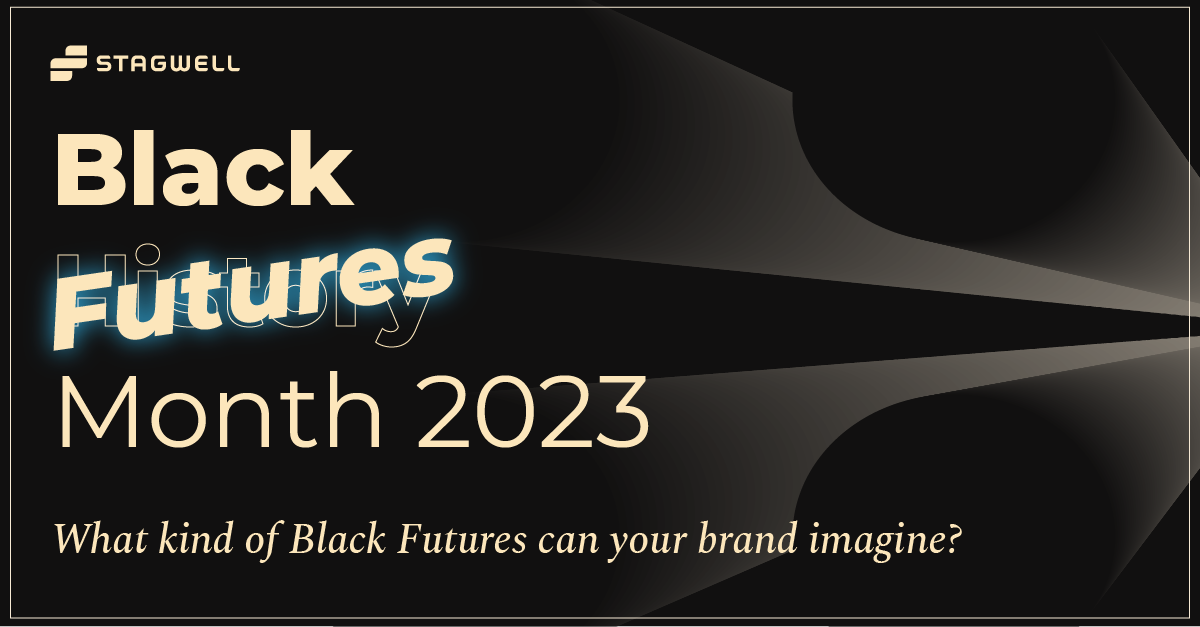
The success of “Black Panther: Wakanda Forever” at the end-of-2022 box office sparked a question at Stagwell: “When is Black Futures Month?” Brands flocked to the marketing table for the Black Panther sequel, and for good reason: in a 2020 study from National Research Group 52% of Black Americans selected the original film as the “best example of representation and inclusion” in American entertainment. But, marketers still rely too much on Black History Month as the main chance to elevate Black stories.
The success of “Wakanda Forever” shows we should focus on Black futures, not just history, in our marketing efforts. As brands and entertainment converge, how can we drive complex representation for Black consumers and tap into growth opportunities?
Multi-Dimensional Blackness
Despite an increase in Black characters and stories in mainstream media, authentic and complex representation is still lacking. 91% of Black Americans still see negative stereotypes as a top pain point. Brands can challenge these narratives through speculative storytelling and Afrofuturism, offering new contexts for Black characters.
Investing in sci-fi, fantasy, or superhero genres can be a potential goldmine for brands. The 2020 National Research Group study shows Black Americans praised “Black Panther” and “Black Lightning” as the best examples of authentic Black representation in American media. These two shows showcase the potential growth in futuristic, fantastical genres that bring Blackness to the masses. The study also found that 77% of American consumers and 85% of Black Americans find Black content in a futuristic setting appealing.
Future-Forward Creativity
Brand creativity that only mines the past for visions of Blackness may dwell on traumatic storylines. Joy exists in the past, but clumsy brand storytelling often leads to the platforming of the same recurring stories about Black oppression. If brands can build Future narratives in concert with Black creatives and think expansively about the potential forms Blackness might take in the future, we’ll see more stories of Black joy and transcendence enter the mainstream.
Potential for Transformation
Ninety-one percent of consumers are confident in the ability of media to influence society, per the 2020 National Research Group study cited above. As brands blur the line between Hollywood and Madison Avenue with branded entertainment, future-leaning visions are the way forward to connect meaningfully with Black consumers.
Let’s use Black Futures Month to challenge our brands to think about what’s next.
What kind of Black Future can your brand imagine, and help create?
Related
Articles
In the News, Press Releases, Thought Leadership
Oct 30, 2024
77% of CEOs Say the Election Will Impact their 2025 Business Strategy; 85% are Bullish on Investment in the Gulf Region, Reveals Stagwell (STGW) Survey

Marketing Frontiers, Thought Leadership
Jul 26, 2024
Game On for In-Game Advertising? Four Things Marketers Should Know About Gaming
It's clear from dozens of Stagwell’s interviews with senior marketers…
Thought Leadership
Jun 28, 2024
Hitting the Mark: Future of News Takeaways from Cannes Lions
Stagwell brought the Future of News to Cannes Lions, where…
Newsletter
Sign Up
By
By: Rafe Needleman, SVP, Technology Content, Allison+Partners
CONTACT
hello@stagwellglobal.com
SIGN UP FOR OUR INSIGHTS BLASTS
Artificial Intelligence will change your job — not in five years, not next year, but now. If you’re not 100% convinced, spend some time experimenting with ChatGPT, the conversational chatbot released into open beta by OpenAI in November 2022. ChatGPT is the first free and easy–to–use chat product based on the groundbreaking GPT 3 Large Language Model (LLM).
The product is a web-based chat system you can have a real conversation with. It is uncanny how well it constructs text output based on almost any input. It can answer questions, generate what appear to be original ideas and hold a decent conversation on any topic. It can also create plausible technical documentation, such as computer code and macros, and food recipes.
If you haven’t already tried it, you should. This technology will have a huge impact on communications, marketing and advertising. It will change your job, as much as the introduction of the internet did.
For many people, ChatGPT provides the first glimpse into what this type of AI will do for us in the future. It is both amazing and terrifying. And the revolution starts today.
Here’s what to know to get started:
1. You can use ChatGPT today to improve your productivity.
ChatGPT a great collaborator for generating ideas and outlines. Experiencing writer’s block? Ask ChatGPT to help get you going. Try “Outline an article about…” for starters.
ChatGPT is also good at getting you up to speed on new topics (Try, “Explain Kubernetes”) and summarizing meetings and complex stories: Type, “Give me the bullet points for this:” and then paste in text from a transcript or story. It can even write Excel macros and more advanced computer code. As part of your existing workflow, ChatGPT can be a great starting point. But keep in mind it can’t (yet) replace all your human skills. Keep reading for why.
2. ChatGPT lies.
ChatGPT is designed to create text that fits a linguistic model. While it is often useful and accurate, it does frequently make stuff up out of nowhere. In some instances, it gets facts completely wrong (ChatGPT seems to be convinced Russia has sent several bears into space, for example; it hasn’t!). Even if it has the correct information in its enormous corpus of knowledge, that doesn’t mean it understands it, and its output can sound completely plausible while being far off target. It’s also critical to remember ChatGPT was trained in 2021. It knows nothing about the world after that.
Simply put, you can’t trust ChatGPT for accuracy. Always verify what it gives you.
3. The field is evolving fast, and you need policies.
If you’re going to use this technology, it’s important to lay out clear guidelines as to how. For example, if you use ChatGPT to write an article for a client, does that need to be disclosed? How about if you use it to prepare social media copy? Let’s say you ask it to write a blog post optimized for a particular audience or SEO. Or maybe you just use it to get an article outline started. Is that something you need to tell stakeholders?
Communications companies have already caught flack for using generative AI to create content. Publications like CNET have used ChatGPT to write articles for months, The Associated Press has incorporated some kind of AI since 2015, and even The Washington Post employed it to help write for the 2020 Presidential Election. They are all still working out how to use it and how they should publicly disclose its use for written articles.
You must work out how you incorporate the technology into your day-to-day work in a responsible way. Make it clear how your teams should and shouldn’t use the tool, knowing its limitations and pitfalls. And make sure you communicate this to partners and customers.
4. Meet the “AI Native”
The capability of AI to generate original and useful creative work at scale will prove to be one of the foundational technologies of the 21st century. It will change how we live, work, learn and even think. The children born into this world will be “AI natives” and will understand the world of ideas in a different way from their parents. We can hope this technology will mostly be used to advance the way we learn and think, just as calculators changed our relationship with math. But we simply do not know yet how the developing brain will react to this type of machine intelligence.
One thing we do need to look out for, though, is a growing digital divide exacerbated by this technology. AI is not cheap to create or run, and some populations may just not have access to it, potentially putting them at an economic disadvantage. It will be a global challenge to create a responsible framework for the distribution of this tech.
5. Generative AI will impact your job, but it won’t kill it.
The software’s ability to create useful customized content is staggering and fundamental. It will certainly change how you work, as well as the nature of creative work at all levels and in every industry, worldwide.
However, no matter how useful (or damaging) this technology becomes, AI will always lack imagination, vision and compassion. Adapting to this new technology will not be easy, it is still only a tool, and we can use it to reinforce our best, most human qualities. It will still need you – your humanity, your personality, your perspective and your soul.
Be ready to change, adapt and embrace this new technology as another tool in your box of tricks.
Those who ignore the power of AI in communications will fall behind a skills curve. It’s something we’ve already embraced at A+P as one of the many tools we use. And we help clients navigate how to make the most out of this amazing technology. Keep following this blog and our social media feeds on LinkedIn, Twitter, and Facebook as we continue our series on the power of AI.
Disclosure: This story was written by a human.
Related
Articles
In the News, Press Releases, Thought Leadership
Oct 30, 2024
77% of CEOs Say the Election Will Impact their 2025 Business Strategy; 85% are Bullish on Investment in the Gulf Region, Reveals Stagwell (STGW) Survey

Marketing Frontiers, Thought Leadership
Jul 26, 2024
Game On for In-Game Advertising? Four Things Marketers Should Know About Gaming
It's clear from dozens of Stagwell’s interviews with senior marketers…
Thought Leadership
Jun 28, 2024
Hitting the Mark: Future of News Takeaways from Cannes Lions
Stagwell brought the Future of News to Cannes Lions, where…
Newsletter
Sign Up
By
By: Aaron Kwittken, Co-Founder and CEO, PRophet
CONTACT
hello@stagwellglobal.com
SIGN UP FOR OUR INSIGHTS BLASTS
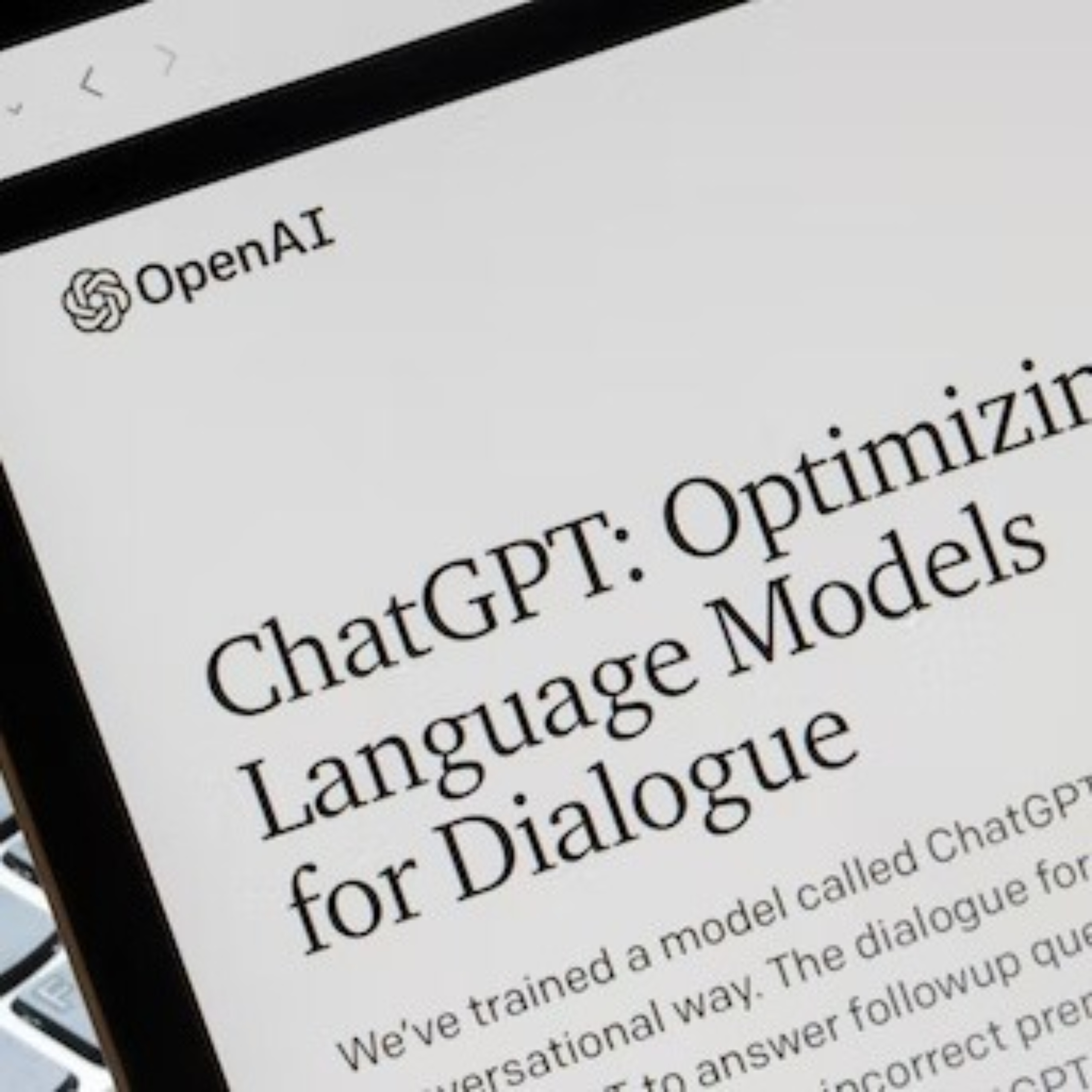
When I launched PRophet in late 2020 I left behind both the ’comforts’ of agency life and the agency I founded. Fast-forward to 2023 and the road less traveled is now a digital super-highway destined to transform the PR industry as we know it, primarily using AI-driven technologies and techniques designed to make modern communicators more productive.
There’s been a lot of press lately about OpenAI’s ChatGPT. While mostly positive and exciting, some critics and naysayers claim the tool’s capabilities are overstated, while others worry that it could be the death knell of creativity by catalyzing complacency and plagiarism.
Some are comparing the rapid rise of ChatGPT to the introduction of the iPhone in 2007. One thing is certain, AI is arguably the most consequential innovation in modern history and is undeniably having a deeply profound impact on industries and facets of day-to-day life. For example, you can hire AI interns Aiden and Aiko; chat with any number of historical figures and celebrities that are living, dead, real or imagined through Character.AI; or hire a DJ through PlaylistAI. On a more serious note: thanks to researchers from MassGeneral, AI can accurately predict lung cancer risk in smokers and non-smokers up to six years into the future.
Microsoft, a major investor in OpenAI, has begun exploring ways to incorporate ChatGPT into its products, leading Google’s management to issue a “code red” and shift focus to developing AI products while laying off thousands of employees. In other words, shit is getting real.
So what does all of this mean for marketers, notably PR professionals and content creators? AI pierced the veil of doubt once upheld by a cabal of Luddites that dominated our industry. PR people who solely rely on or continue to tout their media relationships as their superpower will have the decision to make: become a fossil or become a communications engineer.
A communications engineer sits at the intersection of art and science. They create and manage narratives and drive audience engagement using data and insights to backstop their gut instinct. They build agile teams and fly-wheel tech stacks that deliver specific DIY solutions with minimal human involvement. They use software to find signals in the noise, sussing out and mitigating missiles of misinformation before they can cause harm. They are able to identify journalists’ interests before they make a pitch. And they use technology to generate first drafts of content like press releases, blogs, sticky headlines, crisis statements, bios and social posts.
They will not succumb to the once-dominant, winner-take-all industry tech heavyweights (you all know who I am referring to) who sell analog database systems replete with hackneyed, unfulfilled claims that everything can be done on one platform, from pitching to monitoring to attribution analyses. They see ChatGPT as just the beginning and are looking to continuously improve their performance and experiment with new generative AI models.
Adopting the mindset, tech stack and workflow of a communications engineer will future-proof PR professionals, agencies and brand teams alike. The future is now.
Related
Articles
In the News, Press Releases, Thought Leadership
Oct 30, 2024
77% of CEOs Say the Election Will Impact their 2025 Business Strategy; 85% are Bullish on Investment in the Gulf Region, Reveals Stagwell (STGW) Survey

Marketing Frontiers, Thought Leadership
Jul 26, 2024
Game On for In-Game Advertising? Four Things Marketers Should Know About Gaming
It's clear from dozens of Stagwell’s interviews with senior marketers…
Thought Leadership
Jun 28, 2024
Hitting the Mark: Future of News Takeaways from Cannes Lions
Stagwell brought the Future of News to Cannes Lions, where…
Newsletter
Sign Up
CONTACT
hello@stagwellglobal.com
SIGN UP FOR OUR INSIGHTS BLASTS
As we look to the future of marketing, one thing is certain: Artificial Intelligence (A.I.) will play a major role in shaping the industry. From generative A.I. revolutionizing the way we approach creativity to predictive A.I. providing unprecedented insights and analytics, the potential of A.I. in marketing is vast and exciting.
But what exactly does the next decade hold for this rapidly evolving field? We asked some of the top minds across Stagwell, including leaders from the Stagwell Marketing Cloud, PRophet, Code and Theory, Colle McVoy, Yamamoto, Concentric Health Experience, and Vitro, to share their predictions and insights on the future of A.I. in marketing.
A.I. Won’t Eat the World – But it Will Give Consumers Time and Brands Opportunity
Mansoor Basha, Chief Technology Officer, Stagwell Marketing Cloud
“AI and ML are at the forefront of driving digital transformation across industries and will undoubtedly continue to do so. In a 2011 op-ed, Marc Andreessen observed an environment in which software was increasingly becoming king, famously stating that ‘software is eating the world.’ His observation came about a decade after the peak of the 1990s dot-com bubble as companies like Facebook and Skype were booming. Looking to the next decade, I believe that AI and ML will be eating the world, changing the way we work, live, and interact with brands.

I predict that as AI technology changes everything around us—with things like driverless cars and more efficient, sustainable systems—consumers will have more time on their hands. This will give brands the opportunity to leverage more pointed channels to reach audiences that have more free time to participate. AI will find brands’ ideal audiences and reach consumers in the right place at the right time, especially as AR and VR go mainstream.
And as the hype around ChatGPT and generative AI simmers down, marketing teams will become more comfortable adopting a wide range of AI tools that help them build powerful workflows that drive innovation, aid in decision making, and create new business models. ChatGPT will be an entry point for many marketing teams as they look for relevant ways to use new technologies in their day-to-day work.”
Enhance, Not Replace
Aaron Kwittken, Founder and CEO, PRophet
“Generative AI, while not perfect, is the needle that pierced the veil of doubt and fear amongst marketers when it comes to adopting AI technology. The current limitations are only encumbered by the lack of data needed to make it more performative. 
When paired with the right inputs, this technology will make marketers more efficient by enabling them to create base content faster and better, freeing them up for higher value tasks like editing and strategy deployment. In addition to content creation for press releases, social posts, pitches, marketing collateral, blogs, and more, I see this technology as a huge aid when it comes to legal and compliance issues, especially when working with third parties like influencers and celebrity spokespeople.
Make no mistake, though, the downsides will need to be managed.
Generative AI may reduce the need for junior staff; could be used as an accelerant to create and spread mis and disinformation; and could make professionals more complacent, less creative, and more transactional. This is where it will be on marketers to get creative about how they use this tool to enhance their current activities, not replace them.”
The Key Word with A.I.? Enablement
Dan Gardner, Code and Theory Co-Founder and Executive Chairman
“At the moment, where we will see AI transformation is in how we conduct business. While traditional creative shops may be focused on stunts and activations, I believe the key word here is ‘enablement,’ and how the technology allows businesses to do what they haven’t been able to do before.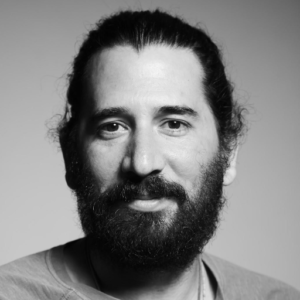
Where the technology is built into systems that yield long-term results. What this looks like exactly, we still do not know for certain, but I do know that technology at its best is when it has the power to drive meaningful change in people’s lives.”
Watch Out for A.I.’s “WordPress” Era
Yamamoto Digital Team
In the end it’s not the technology that sells, it’s the story it tells.”
Welcome to AI as shiny new toy, with machine learning, natural language processing and open access combining to create a sandbox for early adopters. Expect showy, public activations (e.g. Ryan Reynolds reading an AI-generated script for Mint Mobile) as well as backstage experimentation. We marketers will find it hard to pass on an instant first draft of everything we do.
Then AI enters its WordPress phase. Smaller players will benefit from “good enough” templates that auto-generate content. Meanwhile experts will game AI’s limitations to circumvent the inevitable commoditization.
There are also threats. To brand safety. To copyright laws. To beliefs about creativity. We’ll have hard conversations about everything from unconscious bias to criminal misuse. Then, in ten years, full impact. We imagine a golden age of hyper-targeted, account-based marketing. We also predict AI depreciating the value of individual assets a la Napster killing the compact disc. Expect real people to respond with bespoke, humanistic, artisan campaigns.
Finally, a confession. That tasty quote at the top? ChatGPT wrote it. The prompt: Crystalize the future of AI in the haunted, optimistic voice of Don Draper. How’d we do?
“Make it More Human”
Ben Majoy, Creative Director, Observatory
We’re in the industry of threading the needle of perfection, constantly trying to find new ways to get as close as possible to what sometimes feels like an impossible vision. Artificial Intelligence is now creating a superficial answer to that question, but we’ll soon see that creating something narratively resonant means a lot more than a “vision” coming to life.

In the same way that a perfect cheeseburger just doesn’t taste as good as a sloppy one (or any other curated vs. bespoke experience example you want to use), we’re going to see that no matter how accurate the A.I. responds to our prompt, it will never FEEL as good as the human-made. There’s humanity in what we do.
Until Artificial Intelligence can replicate nostalgia, trauma, and emotions like seeing someone you haven’t seen in ten years and picking up right where you left off, we will also feel like something is missing. We’re about to enter the era of “make it more human,” taking the place of the “I’ll know it when I see it” feedback loop.
Sturgeon’s Law
Tom Sullivan, CEO, Vitro
RESPONSE TO YOUR PROMPT, FROM CHAT GPT (195 words)
AI is already revolutionizing marketing…and this continue over the next decade. A big step will be through the use of machine learning algorithms to analyze consumer data and make more targeted, personalized recommendations. This will likely include personalized email campaigns, targeted social media ads, and customized product recommendations on e-commerce sites. 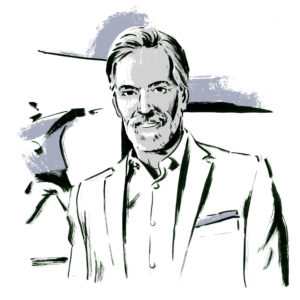
Or course…there are chatbots and virtual assistants. These tools allow companies to interact with customers in real-time, providing immediate support and assistance. They will also be able to handle routine tasks, freeing up human customer service reps to handle more complex inquiries. As time marches on these will continue to get better (and seem even more human).
AI will also have a major impact on content marketing, as machine learning algorithms will be able to analyze consumer data and create more effective content. This could include personalized blog posts, videos, and other types of content that are more likely to engage and convert consumers.
Overall, the use of AI in marketing is likely to increase efficiency, reduce costs, and improve the customer experience. Whilst there may be some initial disruptions as companies adopt these new technologies, the long-term benefits are likely to be significant.
RESPONSE TO YOUR PROMPT, FROM TOM (195 words)
See above. It’s so generative. It’s Sturgeon’s Law (90% of everything is crap). My guess is…AI will generate at least 50% of marketing assets/thinking. It’ll probably all be pretty smart…pretty good. But when it gets to emotional storytelling, powerful creative…it’ll be just like people, generating a lot of “crap”. AI is digital. Digital is binary. Zeroes and Ones. Blacks and whites. Much of creativity comes from the muted tones, the instincts and intuitions…the random brain synapses that live in the grays. I’ve spent a lot of time playing with AI in several arts (music, writing, imagery). Some of it really interesting, and maybe even gives bits of inspiration…but so much of it is just a mashup of elements we’ve seen before. Usually…you can tell AI was the ghost in the machine, right away.
These are relatively early days, and they are super exciting…but here are three watchouts that come to mind: racial biases and presenting incorrect information as true fact. And…look at the “open” in Open AI. It seems to be claiming that everything is open source. So I wonder; will I will end up being a windfall for intellectual property attorneys? Time will tell.
The InkWell is Half Full for Copywriters
John Neerland, VP, Group Creative Director, Colle McVoy
Over the past month, ChatGPT has hit the world, the industry and advertising copywriters in particular, like a ton of virtual bricks.
The reaction from writers I’ve talked to has ranged from cautious pessimism to downright dread. Gallows humor abounds. One writer quipped that it might finally be time to get HVAC certified.
 But I’m choosing, for now, to see the inkwell as half full. Just like Photoshop didn’t eliminate art directors and designers, ChatGPT won’t make copywriters obsolete.
But I’m choosing, for now, to see the inkwell as half full. Just like Photoshop didn’t eliminate art directors and designers, ChatGPT won’t make copywriters obsolete.
Out of the gate, ChatGPT is only as good as the inputs it receives. And even then, ask it to write headlines for a specific product or brand and you get a list that feels more like 50s newspaper retail ads than the One Show.
So, if it isn’t pumping out pencil-worthy lines just yet, how can copywriters harness ChatGPT (and not be trampled by it)? Some initial ways include using it to get over blank page syndrome, getting unstuck from one idea or approach, exploring new tones and styles, making copy more search friendly and speeding up the more mundane writing tasks to free up time for more interesting ones.
Over the next decade, my hope is that copywriters find ways to leverage AI not only as a technological aid to make their work easier and more efficient, but a tool to help make their ideas bigger and their writing better than they’ve ever imagined. Or maybe that’s just what the bots want us to believe.
A Foundational 21st Century Development
Allison+Partners Digital team
Generative AI is about to change our world. The capability of AI to generate original and useful creative work at scale is both amazing and terrifying, yet it will be one of the foundational technologies of the 21st century. There’s no question it will change how we – as communicators and consumers – live, work, learn and even think.
Tools like ChatGPT make it easier to quickly create targeted content, both written and visual. What’s more, it will help expedite what was once a very manual (and tedious) process by customizing and personalizing content for journalists, analysts and customers. In turn, there’s every chance that many of these pitches will be received by AIs with subsequent stories likely written by them as well. (In fact, some already are – controversially.)
Yes, AI may help everyone create content, just like calculators and spreadsheets help us generate numbers. But AI cannot imagine. It cannot bring years of client experience and strategy to the table. And it cannot replace passion, empathy or excitement for our clients and their offerings. AI is just one tool, plain and simple. We can and should use it to reinforce our best, most human qualities in the many years ahead. However, it will still need you – your humanity, your personality, your perspective and your soul.
—-
This piece is part of Stagwell’s Marketing Frontiers content series on Artificial Intelligence. Visit this page to view other perspectives and work from Stagwell’s global teams on A.I.
Related
Articles
In the News, Press Releases, Thought Leadership
Oct 30, 2024
77% of CEOs Say the Election Will Impact their 2025 Business Strategy; 85% are Bullish on Investment in the Gulf Region, Reveals Stagwell (STGW) Survey

Marketing Frontiers, Thought Leadership
Jul 26, 2024
Game On for In-Game Advertising? Four Things Marketers Should Know About Gaming
It's clear from dozens of Stagwell’s interviews with senior marketers…
Thought Leadership
Jun 28, 2024
Hitting the Mark: Future of News Takeaways from Cannes Lions
Stagwell brought the Future of News to Cannes Lions, where…

![Stagwell_CES_OnePager_RCC bls[13]1024_1](https://www.stagwellglobal.com/wp-content/uploads/2023/03/Stagwell_CES_OnePager_RCC-bls131024_1.jpeg)